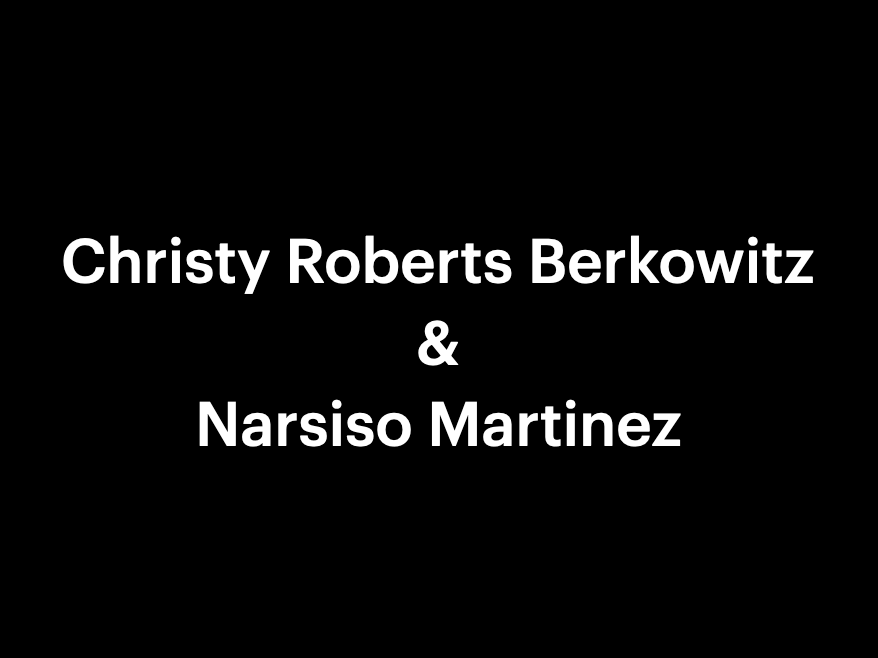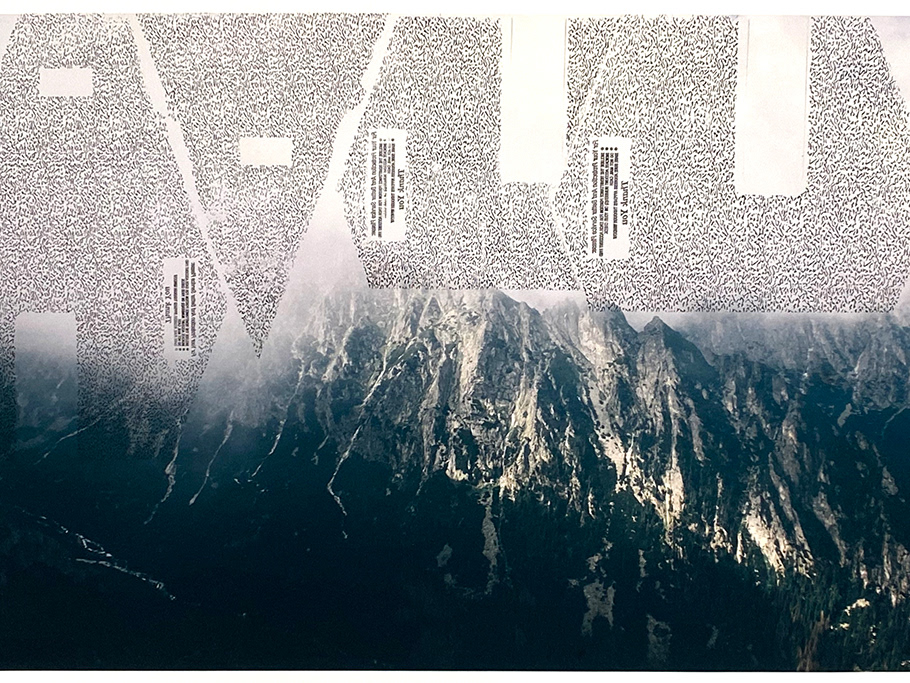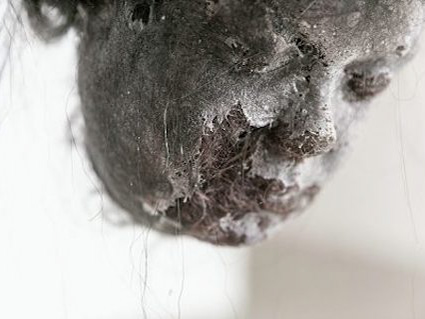Kelly Nipper Interview
Catalyst: Can you tell us a little bit about yourself, like your background, where you went to school, where you grew up, and how you would describe your artwork?
KN: I grew up in Minneapolis and did my undergraduate work at MCAD in Media Arts and graduate work at CalArts in Photo/Art. After CalArts I took a job working at the Getty Research Institute and processed post-war archives for about a decade. Working on the archives of David Tudor and Experiments in Art and Technology, I learned about the early collaborations of artists, scientists, and dancers. This led me to working with Allan Kaprow as his archivist and assistant for another decade.
I have an interdisciplinary practice that maps out the body through technology and geography to understand how space unfolds in time. The broader strategy of imagining the possibilities of time in my work stems from the idea that a single environment or condition can endlessly fracture itself into different shapes or forms.
While exploring the connection between physical intimacy and technological advancement, I draw on the morphology of photography, particularly its relation to ethnography, as well as the social sciences and its sub fields: study and analysis of human movement, ethnic and racial studies, communication theory, experiential learning, critical pedagogy, and climate change. As communication has evolved through technological mediation spatial distance has collapsed and people have physically moved farther away from each other. Information is sent and received in isolation and at a temporal/patial remove.
Catalyst: Can you talk about the Labanotation system and how you came to learn about this system?
KN: I understand Labanotation as graphic symbols that are more alphabet than textural composition and aligned with instruction and building across many platforms. I began working with dancers in the late 1990s and was introduced to the system by Liz Maxwell who is a choreographer, dancer, and certified Laban Movement Analyst. Laban Movement Analysis (LMA) is a movement system created by Hungarian movement theorist Rudolph Laban. It’s one of many systems (photographic, conceptual, writing, etc.) I use for gathering and assembling information. I also work with Bartenieff Fundamentals – Irmgard Bartenieff studied with Laban. In 2007, I made a two-channel video called Circle Circle and collaborated with Hannah Kosstrin who at the time was a PhD student in Dance Studies at The Ohio State University. Hannah notated the two-channel video, which was the same piece played backat two different speeds. Foundational to the LMA system are the Platonic solids-tetrahedron, cube, octahedron, dodecahedron, icosahedron. Geometries and concepts linked to analog technology and laboratory experimentation act as fundamental building blocks in the development of my work. This coupled -standing collaborations with dancers and other performers learning specific systems – open, closed, isolated - over time is a way that I understand and explore connectivity and the making, engineering, recording, and translation of three-dimensional visual information.
Catalyst: Can you talk about how you choreograph and or map out the dancer’s movement? When I researched, the Labanotation system seemed to appear as drawings/diagrams that are broken down into movement that is regulated by where the body is in relation to the space the person is in. The Bartenieff Fundamentals appear to have a set of movements that work with the Labanotation system. Since the movement isn’t counted out into steps and or done to music exactly, what factors help design how the dancers will move in each installation?
KN: Time measurement and counting are an important part of my practice, which includes the work with dancers. The location/site and objects/choreographic tools are factors in designing both the movement and a performers pathway in space.
n the studio the dancers, LMA instructor, and I work with internal counter tensions that stabilize the body in space and support the dancer as they roll off their body’s surfaces.
This process requires that organs such as the pelvic floor and spine open and pour into the earth’s floor, which establishes connectivity and stabilityI to shift laterally off center and off vertical as an organism moving on low and mid-levels. We have also employed visualization exercises such as the weight of the ocean rolling over backspace, bony architecture or scaffolding emerging from the earth, and hands gliding three inches below the skin. In the studio we use models, diagrams, photographs, metronomes, and video.
I tend to work with dancers who are not certified in this system – Marissa, a dancer I have worked with for nearly 15 years, and I often discuss how we have taken apart her body and put it back together in the work with the LMA instructors. Any choreography that the dancers and I have developed usually begins from a photograph and/or collaboration with particular performers –Marissa Ruazol, Taisha Paggett, and Sarah Leddy. Everything I’ve learned about LMA and dance has come from working with dancers and different movement analysis instructors. Taisha and Marissa have been some of my greatest teachers.
Catalyst: I’m curious about how all the different pieces in your work communicates with the audience. There appear to be multiple layers of language throughout the works, the symbolic language for the dancers, how the dancers move, and what the dancers are wearing plays into what is understood by the viewer. For instance, the dancers usually have their faces covered; why?
KN: I work with the mask as a cover, which edits visual information. I first used masks in the performance Floyd on the Floor in 2007. The masks in this work had numbers appliqued to the faces, which could only be read when a dancer was positioned in a certain way. I was looking at a lot of Hans Arp’s work at the time and some of the number shapes come from a series of his prints. The idea of using numbers to identify the dancers is from a book I read in college. Actually, I think first I read The Handmaids Tale by Margaret Atwood and then read Anthem by Ayn Rand. At the time I saw the future in these books.
Catalyst: I like how you’ve said that the environment is a shifting shape, can you explain what you mean by that? And how a shifting environment affects the way the people in your installations move?
KN: I grew up in the Midwest and observed severe changes in weather, the even tone of grey sky, expanses of white snow, darkness, desolation, freezing temperatures, heated skyways and tunnels—atmospheric phenomena mediated by plantedfields, wind farms, and the use of layers to stay warm. My work embodies degrees of temperature and angles of motion: the effect of extreme weather on the environment and on the behavior of matter and living organisms—both outdoors and inside habitats, dwellings, and laboratories where these conditions are created for purposes of research.
I believe the earth is climatically and geographically turning on itself: the North becoming the South and vice versa, the poles sliding clockwise toward the equator, and the earth getting hotter. Climate change feedback loops inform the behavior and organization of matter and material across multiple terrestrial ecosystems. Mountain ranges; crystallography; oceans (surface and floor); land masses; geological time; poles: I arrange these things in diagrammatic form to decide will remain flat and what will be given volume in the work.
Catalyst: I’ve read that Anni Albers and weaving inspire you. I’ve noticed that you have drawings illustrating the intersections made in weaving and tools used to weave. The weaving tools I have seen are shuttles used to add the weft (horizontal lines) to the warp (vertical lines, while on the loom.) Are these patterns placed in the installation as signifiers to the audience or as instructions to the dancers? If so, can you share with us what they say?
KN: I work with the shuttle as a tool that creates the horizontal plane of space.
Catalyst: How does this play into your work? Does it help create borders within the space you are working in? (I’ll be honest this is particularly interesting to me because I’m a weaver)
KN: I work with the shuttle as an actual tool and as a conceptual tool for creating the horizontal plane of space. I’ve worked with shuttles as appliques on a unitard worn by Taisha Paggett in a performance called Compass and as room scaled objects in the exhibition Black Forest. The shuttles relate to other objects in the exhibition including pair of wool blankets. Inset in the blankets are the symbols for the horizontal plane of space.
Catalyst: So far we’ve talked about how the work is made, (a little), the history related to how you got here, some of the concepts behind the process of the works. For the last question, I’m hoping you can tell me more about the conceptual aspects of your work.
KN: Concepts linked to analog technology and laboratory experimentation are fundamental to my practice. The work is the process, especially in the performances. It allows me to give emphasis to a particular process by making it public through the context and duration of a performance.
For example, in my current project Terre Mecanique (mechanical landscape) the performance is a collaboration with the Self-Assembly Lab at MIT and involves the development and testing of a new printing process as the performance. The printing process and other production processes related to still and moving image making are integral to my practice and to working in time-based media.
Another example could be the performance project Tessa Pattern Takes a Picture, which is still in development and much farther along than the mechanical landscape. I was thinking
about what it’s like to take a picture with a large format camera at night in low light, when the sky and landscape are near black, requiring that the lens stay open for a longer period of time. The length of exposure is a form time takes in a photograph. The piece as a whole is emblematic of the Zone System—a photographic convention created by Ansel Adams and Fred Archer for determining exposure and development of picture values. The opposing end points of the continuum are Zone 0 (pure black) and Zone 10 (pure white) and in between are near black, middle grey, black materials, slight tone without texture, and so on. In a black box the dancers carve space with their bodies expressing the time it takes to record an image on film when the sky is near black.
The name Tessa Pattern is derived from test a pattern. I imagined, her companion, Theo Weather, as carrying a stopped clock in his pocket. Tessa has a sister named Tulip Pattern. Tessa Pattern, Tulip Pattern, and Theo Weather are sometimes concepts and sometimes people. They originate in the Black Forest, which is both an area in Germany and the title of a solo exhibition I was working on at the same time. Within the context of this performance and the solo exhibition the Black Forest functions as both a geographic locale; site of industry as well as where myths are produced. The forest is a delineated space in which the natural growth process of the indigenous matter sets the composition and is a concept I often return to in my work.
The performers are a composer and sound technician, two bass players, a dancer, and an actress assembling a percussion instrument made of buttons and blocks on a raised platform in front a projected image of a ceramic globe and color chart. The pleated costumes worn by the performers included masks and mitten hands strung on a rope. The lights were either on or off. There are accordion pleated screens configured into different shapes by the dancer and actress and a large-scale muslin cylinder that hangs from the ceiling of the theater over the stage and the audience. Skimming the stage floor and encircling the audience the bass players travel in space attached to amps with long cords making zig zag patterns on the floor of the stage. They push against the outside walls of the cylinder as they play. The bass vibrates the rooms and all performers are called upon for percussion. The concept for the music composition is based on 24 drawings, variations of the same pattern that will be composed into 24 songs about 2 1/2 minutes each to total 60 minutes, a day in an hour.
(Thank you, for checking out this interview, for more about Kelly Nipper, please check out the exhibition section of this site and check out her page.)



